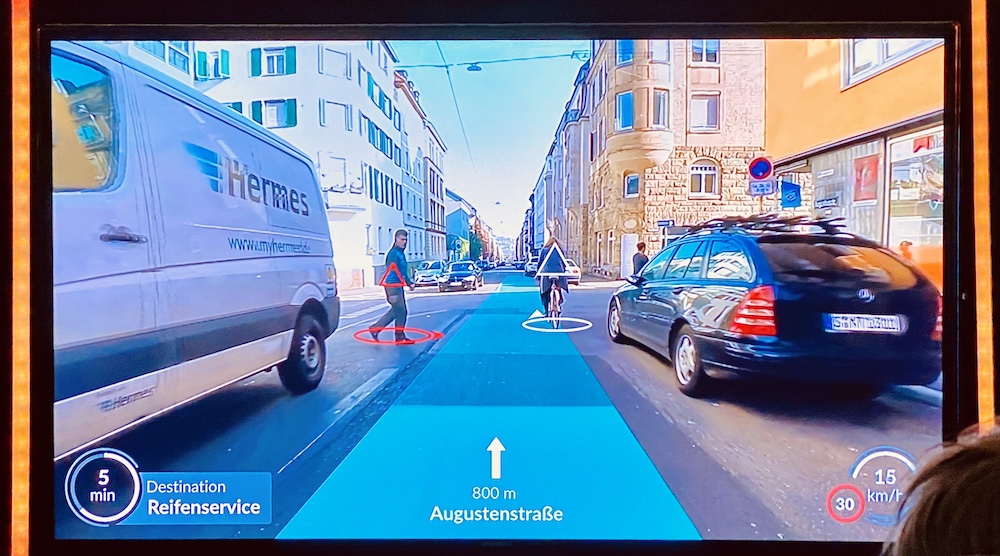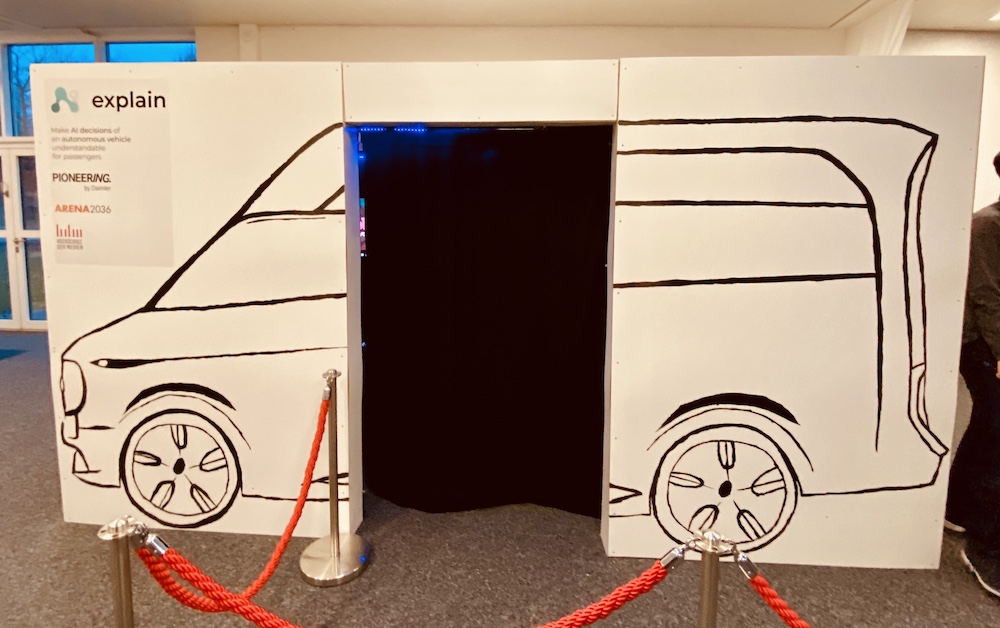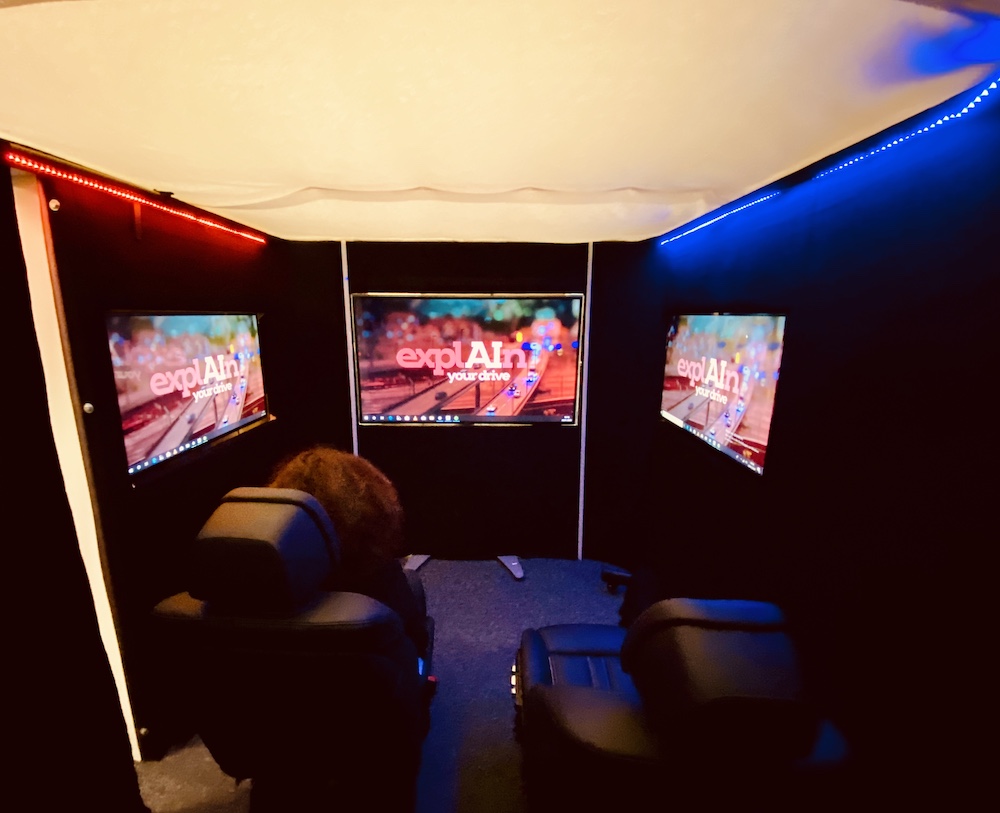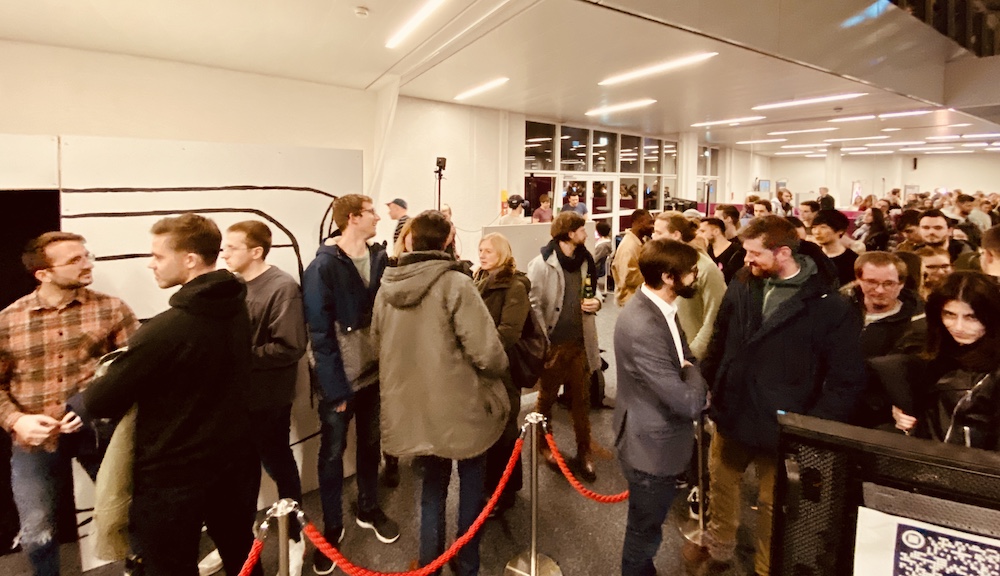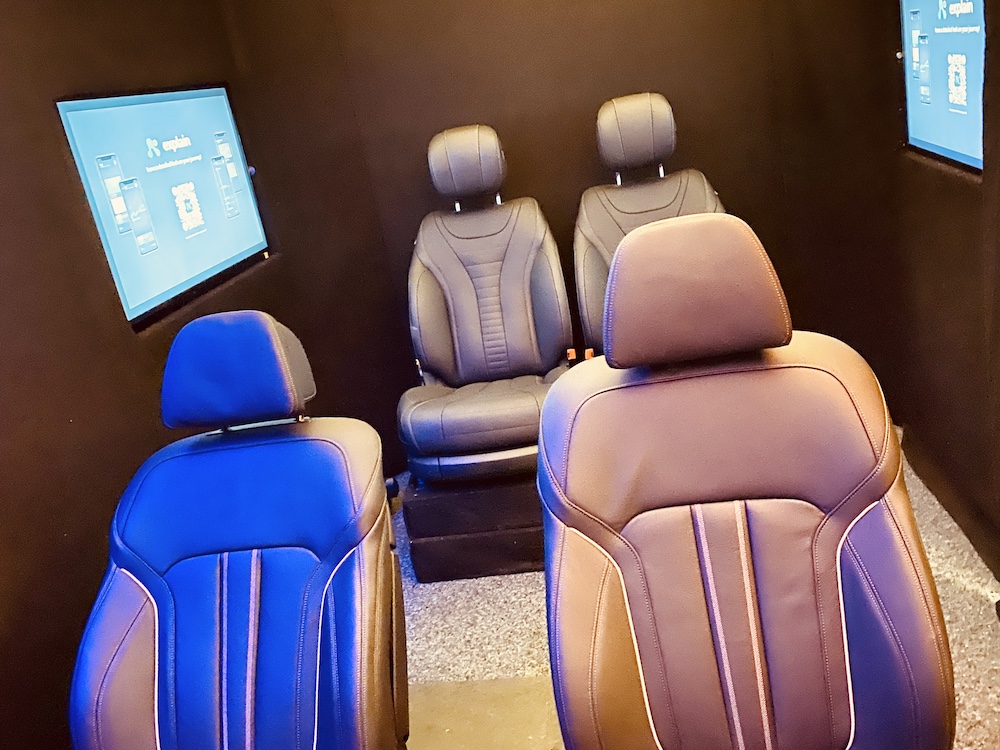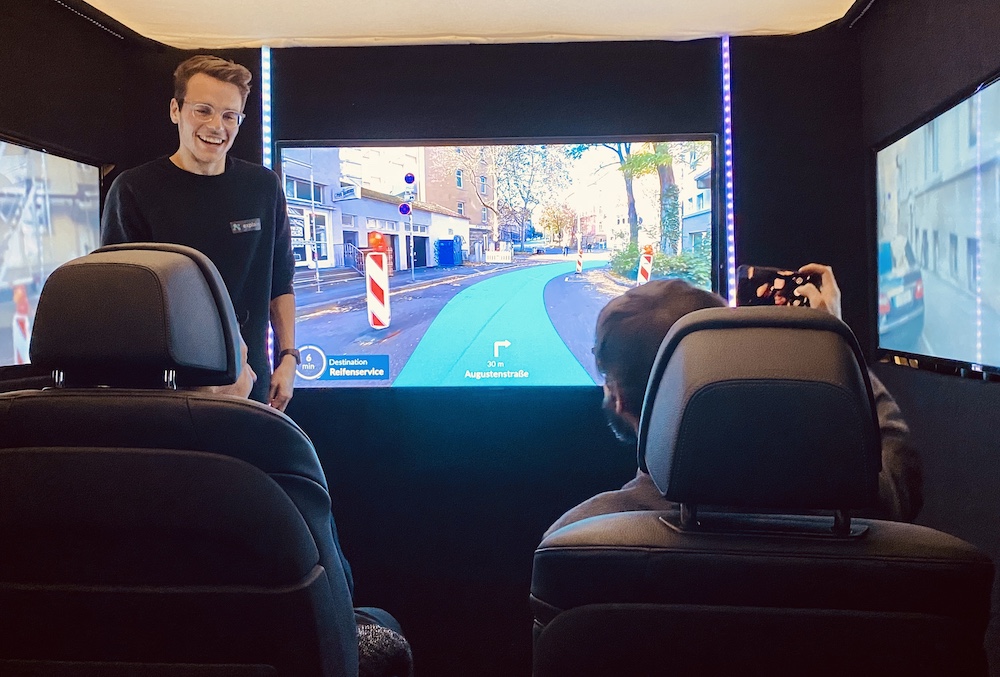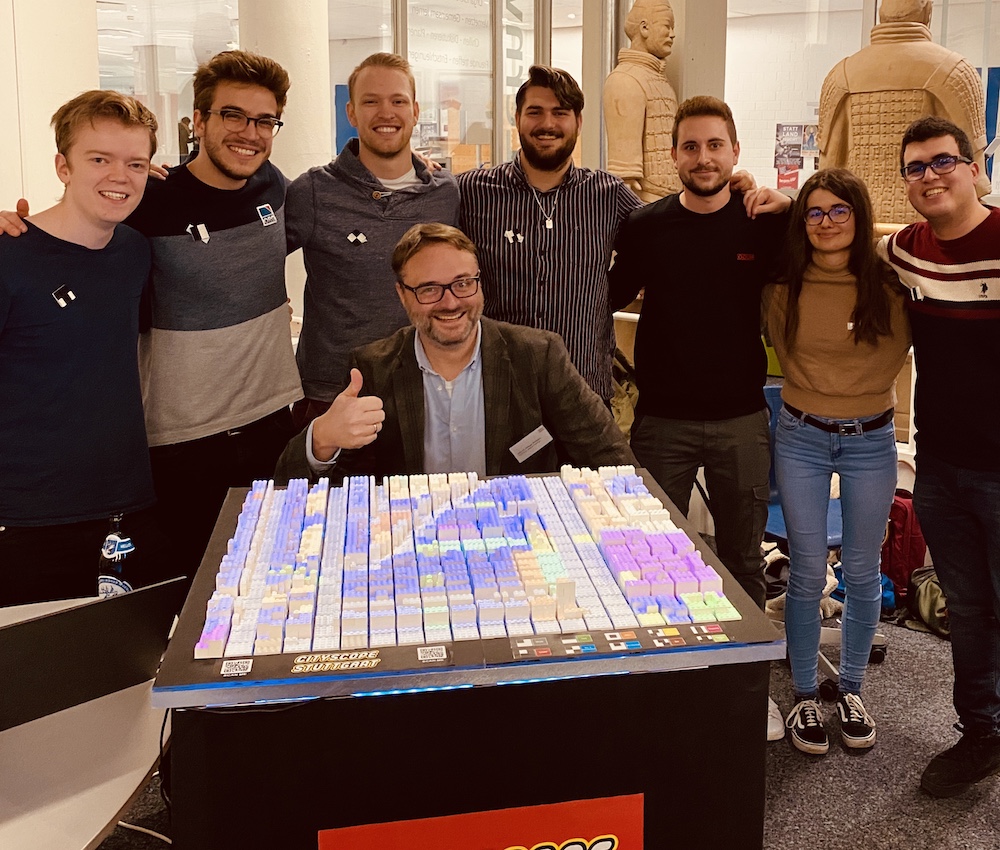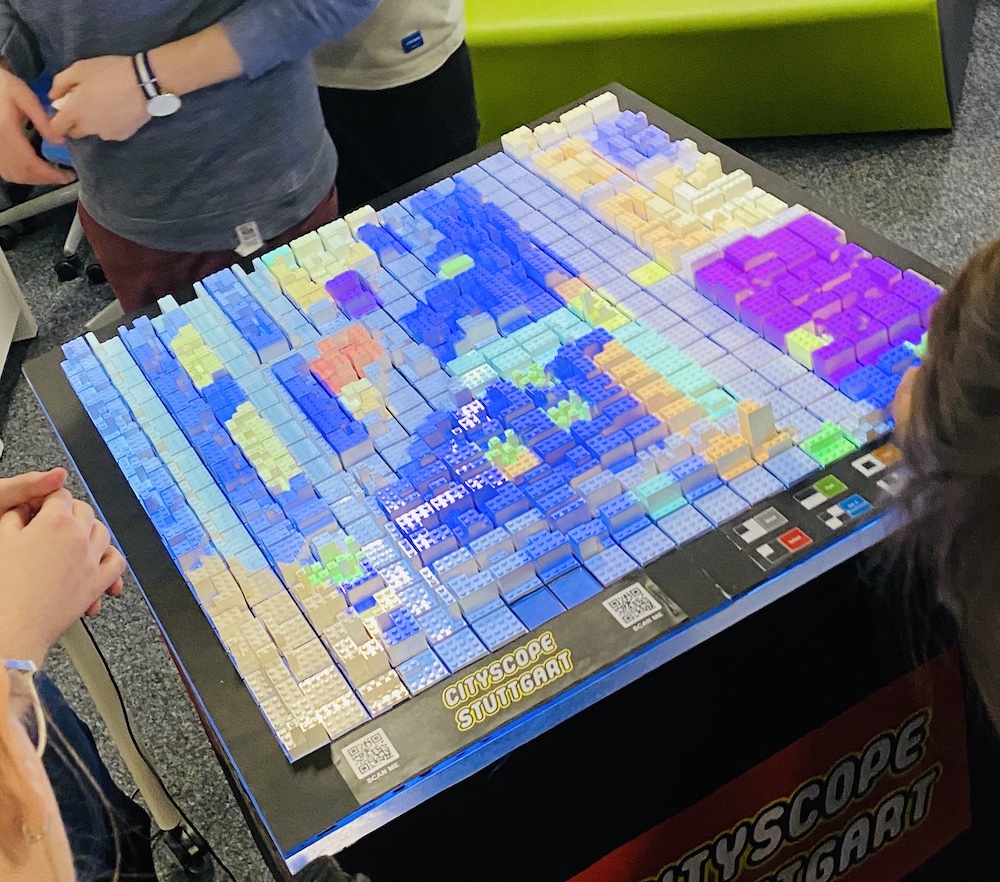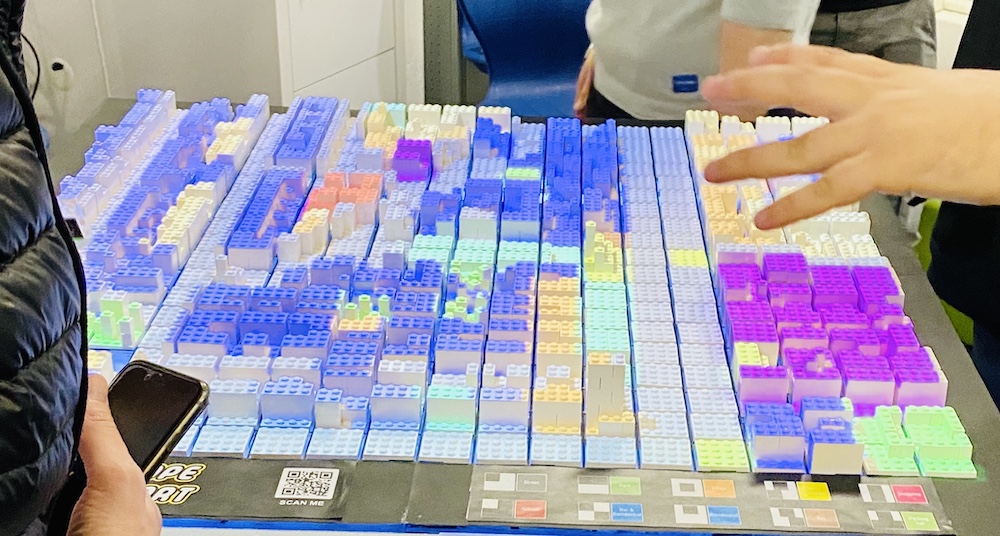MediaNight January, 30th 2020
UX in Autonomous Driving
One of the highlights of this semesters’ MediaNight was the autonomous driving simulator called “Sitzkiste” developed by bachelor and master students in cooperation with the Arena2036 and Daimler AG in the “explAIn your drive” project. The goal of the project was to develop a simulator for an autonomous shuttle, that can be used for user testing, as well as conduct certain tests with users. Our main focus was on improving the User Experience (UX) when riding an autonoumous shuttle and to investigate into the effects of different interaction modalities (such as light, sound, AR, haptics, mobile app) on the user.

The “Sitzkiste” 
Inside the “Sitzkiste” 
Long queue waiting for a drive 
Comfortable seats 
Driving 
AR View
One of the research questions was: “Which combinations of modalities (multimodal interaction) work best in providing the user with the information he/she wants and needs in order to feel comfortable and safe in an autnomous shuttle?”. The semester project was embedded into a larger research project (FlexCAR) and in cooperation with the Daimler research department in Sindelfingen. Credits for the great work go to Tobias Schneider, who is conducting his PhD thesis on “AI transparency and UX in autonomous driving”, the student bachelor team (Felix Dimmler, Fabiola Dums, Lisia Dutt, Tamara Hezel, Daniel Anton Knizia, Carlo Knödler, Benjamin Kramser, Varvara Lukina, Maximilian Merz, Cornelius Zysk), the master team (Miro Bilge, Anastasia Keller, Raimondo Lazzara, Alex Mainka, Moritz Storz, Maximilian Valentin Tränkner, Utler) as well as the Daimler partners Dr. Dimitra Theofanou-Fuelbier, Dr. Joana Hois and Dr. Alischa Rosenstein. Last but not least many thanks goes to my colleague Wolfgang Gruel. It’s always great fun working in an interdisciplinary team fostering innovative ideas! Thanks very much for the great work and we are looking forward to the next semester! If you wish you can take a virtual seat in the simulator here.
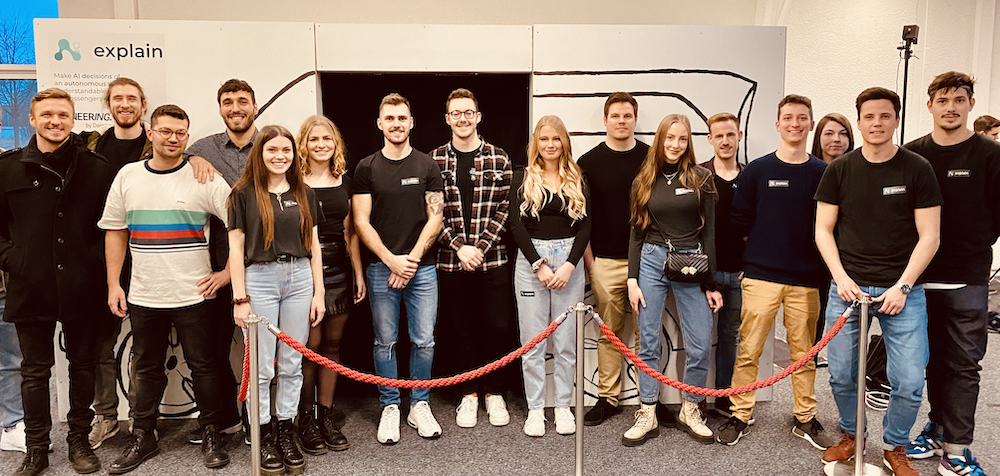
An Easy Way to Smart Roads – Smart Penguins
In some scenarios, autonomous vehicles can’t rely on their sensors alone, they need to get a better understanding of their environment. Thus we need to make the environment smart and let it communicate with the autonomous vehicles. This semester we focused on the roads and tried to come up with a simple technical solution for – what we call – “Smart Roads”.
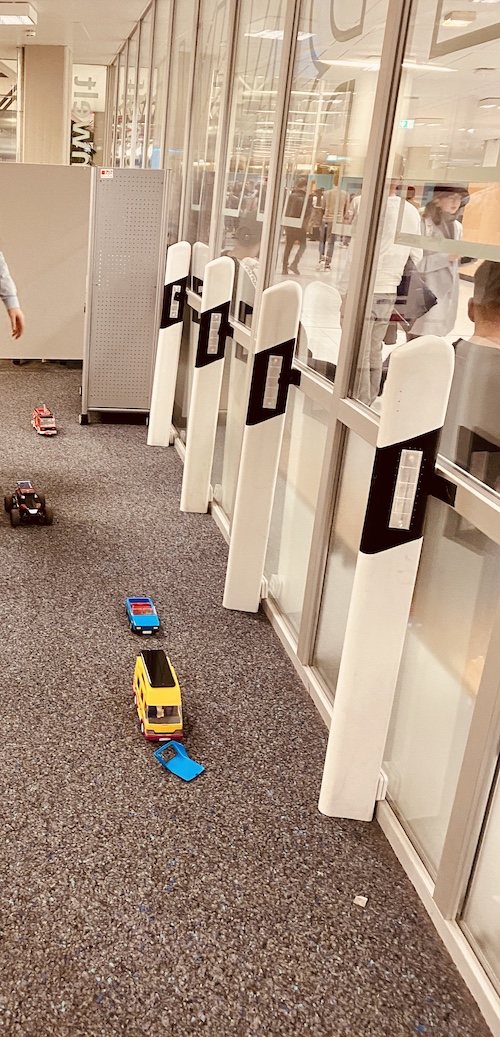
The idea is simple: we use the road side pillars (as shown in the picture above) – we call them penguins because of their black and white colouring – and make them smart by attaching sensors onto them. The sensors can detect for example obstacles (such as animals, pedestrians or other things), measure the temperature (for example to detect black ice), measure air quality or whatever else may be interesting for city or road planners. But how can we transmit the measured data to passing by vehicles or to whoever is interested? Mobile networks such as 5G could be a possible solution, but maybe this would be too expensive and on the country side we sometimes do not have network coverage (this is especially true for Germany). So we decided to use a Bluetooth LE mesh network technology called FruityMesh (invented by Marius Heil in his Master-Thesis) to transmit the information from pillar to pillar along the roadside. The hardware is very affordable and easy to install and – that’s maybe the main benefit – it requires very little energy. In combination with a small accumulator and some energy harvesting (e.g. by using the BlueRange Enerthing panels) they can be operated with nearly zero maintenance costs for many years.
For a better understanding the concept is shown in this video. And if you are interested in more details, you can download a presentation as PDF here (in German).
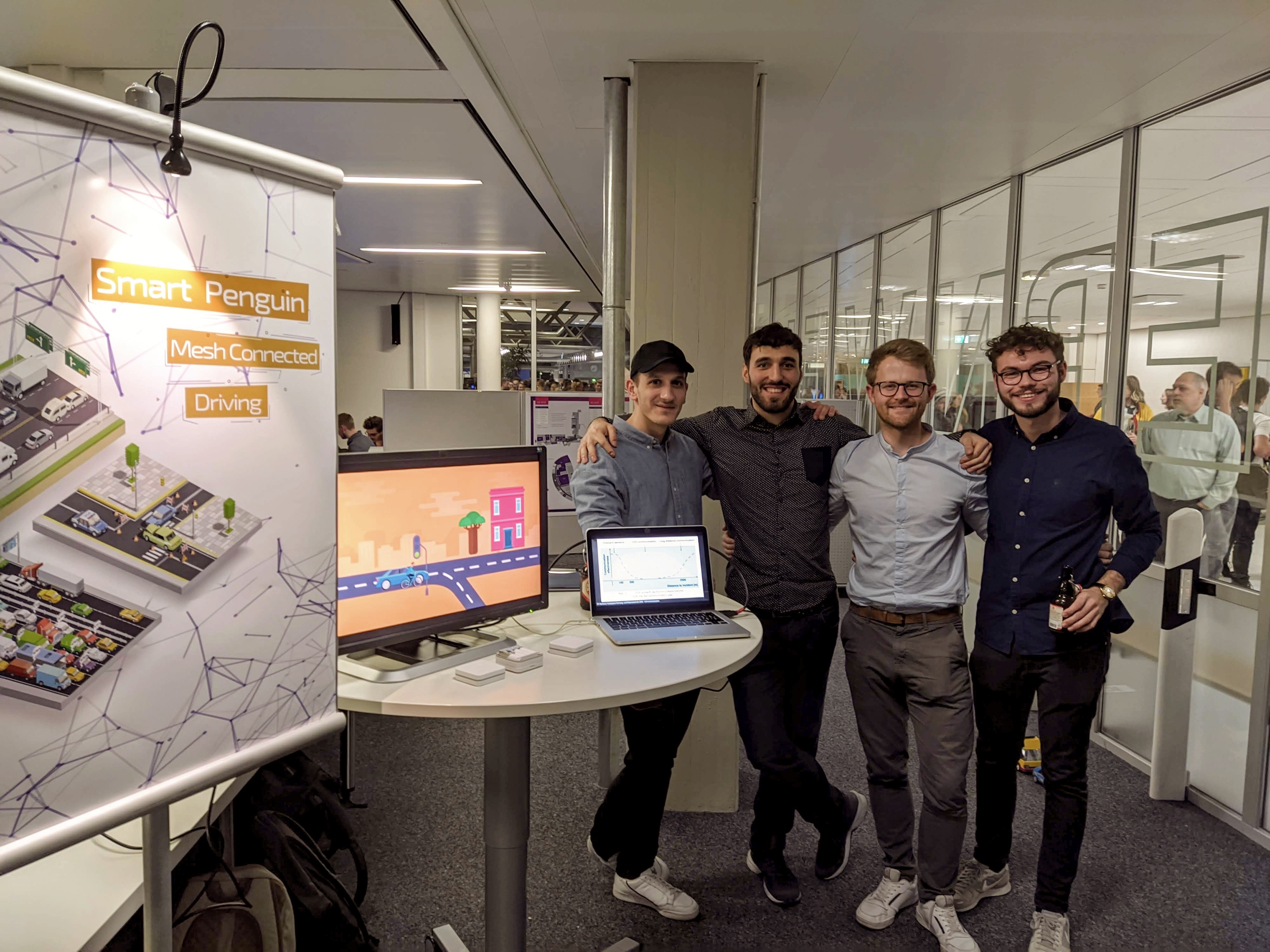
Tangible Urban City Planning
From smart roads to smart cities! Another project of great interest to the visitors was: CityScope. The goal of this project was to build a part of Stuttgart city – in this case the Bohnenviertel – with Lego building blocks in order to have an interactive and tangible model that we can use to visualize the effect of changes on the city. The project idea is based on MIT CityScope. Wolfgang Gruel used to work at MIT and so we had a good basis to get the project running. The idea of city scope is to create a tool for shared, interactive computation for urban planning. The most challeging part for the international and interdisciplinary student team (Matt Acher, Benjamin Fetzer, Jannik Hummer, Kirca, Maximilian Klein, Laurine Sajdak, Viktor Zenk) maybe was to build the table in the first place, but this also was maybe the most fun part. The development of more sophisticated algorithms that define the correct colouring of the lego bricks will be part of the next semester project. Here you can find a short presentation on the project.
Predicting Sales of Porsche Customers
Last but not least, we were working in cooperation with Porsche AG on new ways of helping to predict what features customers in different markets probably would like to have when purchasing a new Porsche car. We had a team of Mobile Media and Mediaeconomics students working on the so call ICC (Internet Car Configurator) and cold start problem. They developed different concepts and ideas, such as for example the ugliest Porsche game, Porschesona, a Porsche Lifestyle configurator and many more. At the end they developed two prototypes, one was a so called priorization tool that allows to find out which features of a Porsche are most important for a customer and at the same time calculate a qualifier for existing configurations from the ICC. The second one was a chat bot that was used to interview journalists in order to find out twofold: firstly what features are most important for journalist and secondly is a chatbot a useful tool for car configurations and what are the benefits and drawbacks? You can find a very short description of the project here as PDF.
Thanks goes to the wonderful team at Porsche (just to name two of them: Robin Seyock and Simon Dürr) to make this project possible and of course to the whole student team. It was a great pleasure to work with you guys! We will continue the good cooperation next semester with a new project. We are really looking forward to this.
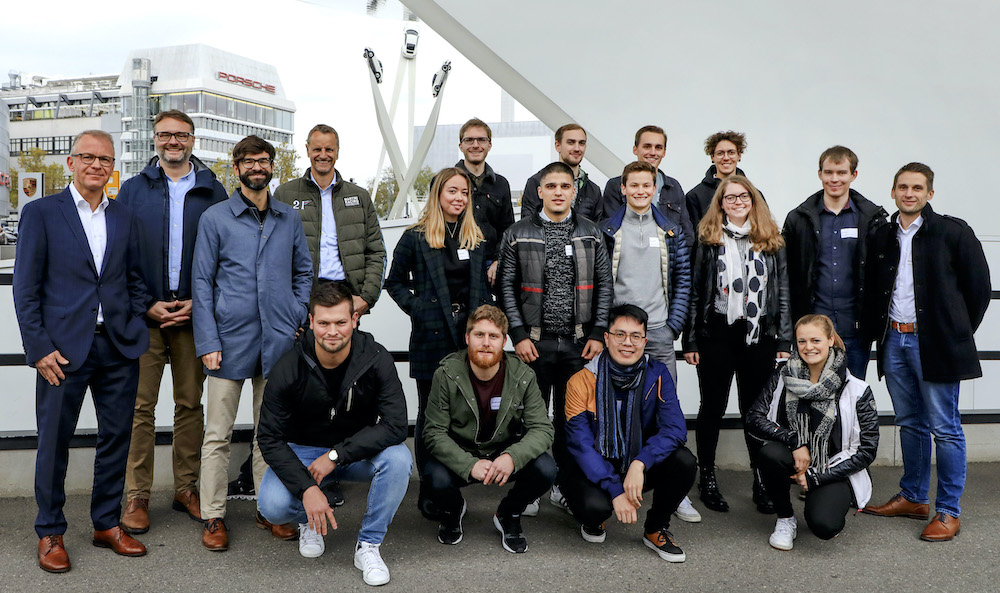
To sum it all up: This semester was a blast! Very big compliments to every team and all our project partners. It’s a pleasure to be part of this! Thanks and looking forward to the next at least 46 semester! (;-))


